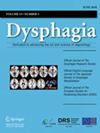咽腔电刺激辅助吞咽治疗中风后吞咽困难:随机对照研究的系统回顾和元分析。
摘要
中风是导致成人死亡和残疾的主要原因。每 10 万患者年的中风发病率为 2875 例。多达 37% 至 78% 的急性中风患者存在吞咽困难。吞咽困难容易导致吸入性肺炎、脱水、营养不良等严重并发症,影响脑卒中患者的生活质量,增加其死亡率。有效预防和治疗脑卒中后吞咽困难,对改善患者预后和生活质量具有重要意义。一些研究表明,咽腔电刺激辅助吞咽(PCES 辅助吞咽)对脑卒中后吞咽困难患者有积极作用。本研究将评估 PCES 辅助吞咽对脑卒中后吞咽困难的影响,包括吞咽功能、鼻饲管拔除率、住院时间等。在 Cochrane Library、Embase、PubMed、Web of Science、中国生物医学文献数据库、VIP 信息资源系统、CNKI 和万方医学等 8 个数据库中检索了 PCES 辅助吞咽治疗卒中后吞咽困难的随机对照试验(RCT)。检索时间为数据库建立至 2022 年 6 月。Rayyan用于筛选纳入研究的检索文献偏倚风险,并使用ROB2.0进行计算。RevMan5.3软件进行荟萃分析,并计算标准平均差(SMD)和95%置信区间(CI)。模型类型为随机效应模型,风险比(RR)用作两个分类变量的效应大小。提取干预组和对照组的吞咽功能评分、鼻饲管拔出率和住院时间(LOS),并用森林图展示荟萃分析结果。荟萃分析纳入了 2010 年至 2018 年的六项研究,共计 341 人。所有研究均报告了吞咽困难严重程度的定量结果测量指标,部分研究还报告了鼻饲管拔出率、LOS和穿刺-吸入量表(PAS)。PCES 组的总体吞咽功能优于对照组(SMD = - 0.20,95%CI - 0.38 至 - 0.03,P = 0.02)。在吞咽困难严重程度方面,咽腔电刺激(PCES)组与对照组的吞咽困难严重程度量表(DSRS)差异有统计学意义(SMD = - 0.24,95%CI - 0.48 to 0,P = 0.05)。PCES 组鼻饲管撤回率高于对照组(RR = 2.88,95% CI 1.15 至 7.26,P = 0.02)。PCES 组与对照组的 LOS 无明显差异(SMD = - 0.19,95%CI - 0.44 至 0.07,P = 0.15)。本系统综述和荟萃分析提供了相当可靠的证据,证明 PCES 辅助吞咽可改善卒中后吞咽困难患者的鼻饲吞咽功能和鼻饲管拔出率。但是,在减少口腔喂养、误吸和住院时间方面还缺乏证据,需要进一步研究。

Stroke is the leading cause of death and disability among adults. The incidence of stroke per 100, 000 patient-years was 2875. As many as 37% to 78% of patients with acute strokes suffer dysphagia. Dysphagia can easily lead to inhalation pneumonia, dehydration, malnutrition, and other serious complications, affecting the quality of life of stroke patients and increasing their mortality. Effective prevention and treatment of post-stroke dysphagia are of great significance to improving the prognosis and quality of life of patients. Some studies have shown that Pharyngeal cavity electrical stimulation-assisted swallowing (PCES-assisted swallowing) has a positive effect on patients with post-stroke dysphagia. This study will evaluate the effects of PCES-assisted swallowing on post-stroke dysphagia, including swallowing function, withdrawal rate of nasal feeding tubes, duration of hospitalization, and so on. Randomized controlled trials (RCTs) of PCES-assisted swallowing in the treatment of post-stroke dysphagia were searched in eight databases, including Cochrane Library, Embase, PubMed, Web of Science, Chinese Biomedical Literature Database, VIP Information Resource System, CNKI, and Wanfang Medical Science. The retrieval time was from the database establishment to June 2022. Rayyan was used to screen the retrieved literature risk of bias for included studies and was calculated using ROB2.0. The RevMan 5.3 software was used for the meta-analysis with the standard mean difference (SMD) and 95% confidence interval (CI). The model type was a random effect model, The risk ratio (RR) was used as the effect size for the two categorical variables. The swallowing function scores, withdrawal rate of nasal feeding tubes, and Length of stay (LOS) of the intervention and control groups were extracted, and the results of the meta-analysis were presented using a forest plot. Six studies from 2010 to 2018 with a total of 341 people were included in the meta-analysis. All studies reported quantitative outcome measures for the severity of dysphagia, and some reported the withdrawal rate of nasal feeding tubes, LOS, and penetration-aspiration-scale (PAS). The overall swallowing function of the PCES group was better than that of the control group (SMD = - 0.20, 95%CI - 0.38 to - 0.03, P = 0.02). In terms of the severity of dysphagia, there was a statistically significant difference in the Dysphagia Severity Rating scale (DSRS) between the Pharyngeal cavity electrical stimulation (PCES) group and the control group (SMD = - 0.24, 95%CI - 0.48 to 0, P = 0.05). The PCES group nasal feeding withdrawal rate of nasal feeding tubes was higher than the control group (RR = 2.88, 95% CI 1.15 to 7.26, P = 0.02). There was no significant difference in the LOS between the PCES group and the control group (SMD = - 0.19, 95%CI - 0.44 to 0.07, P = 0.15). This systematic review and meta-analysis provide reasonably reliable evidence that PCES-assisted swallowing can improve nasogastric feeding swallowing function and the withdrawal rate of nasal feeding tubes in patients with post-stroke dysphagia. However, the evidence for reducing oral feeding, aspiration, and length of hospitalization stay is lacking, and further studies are needed.

 求助内容:
求助内容: 应助结果提醒方式:
应助结果提醒方式:


